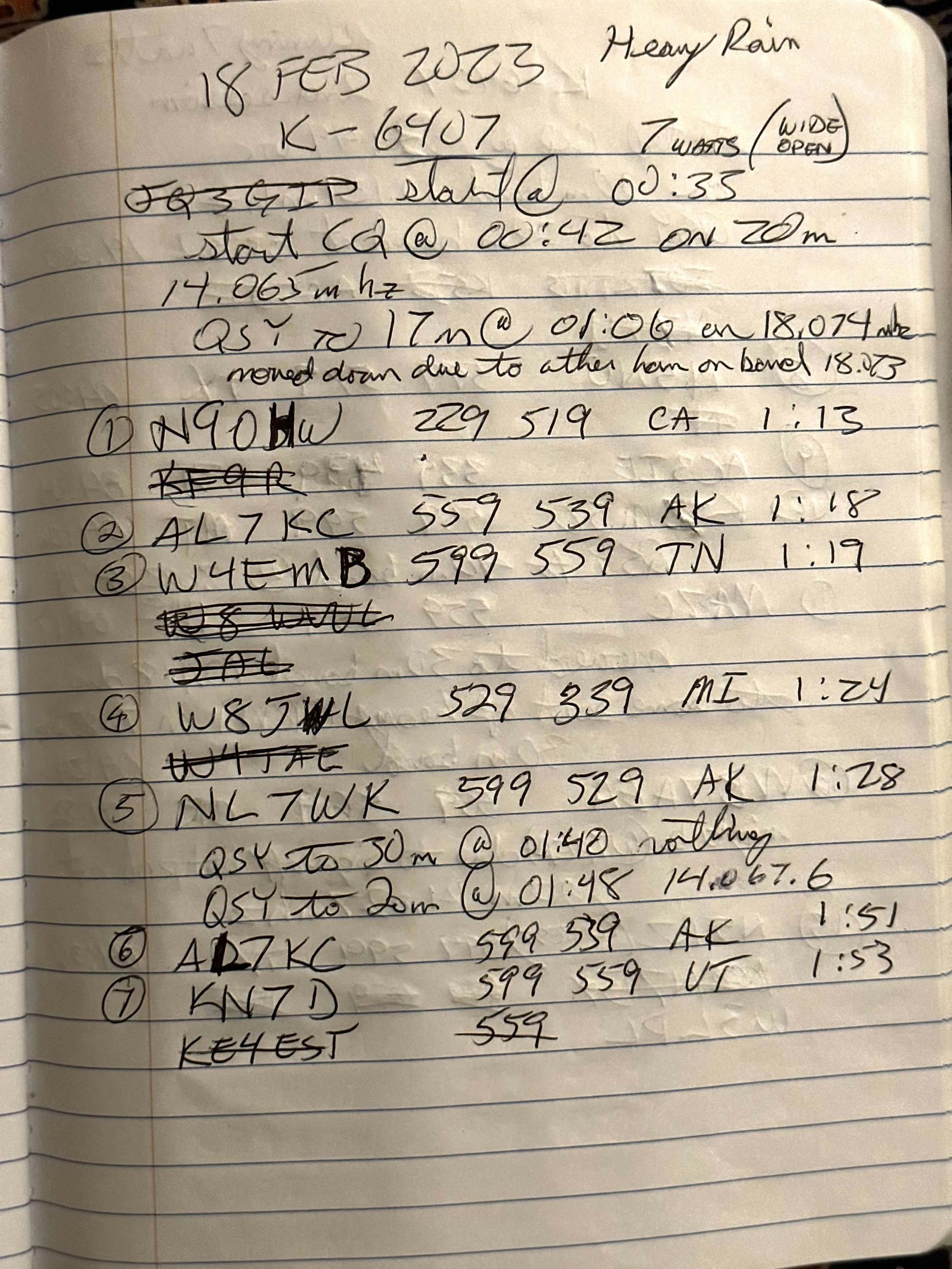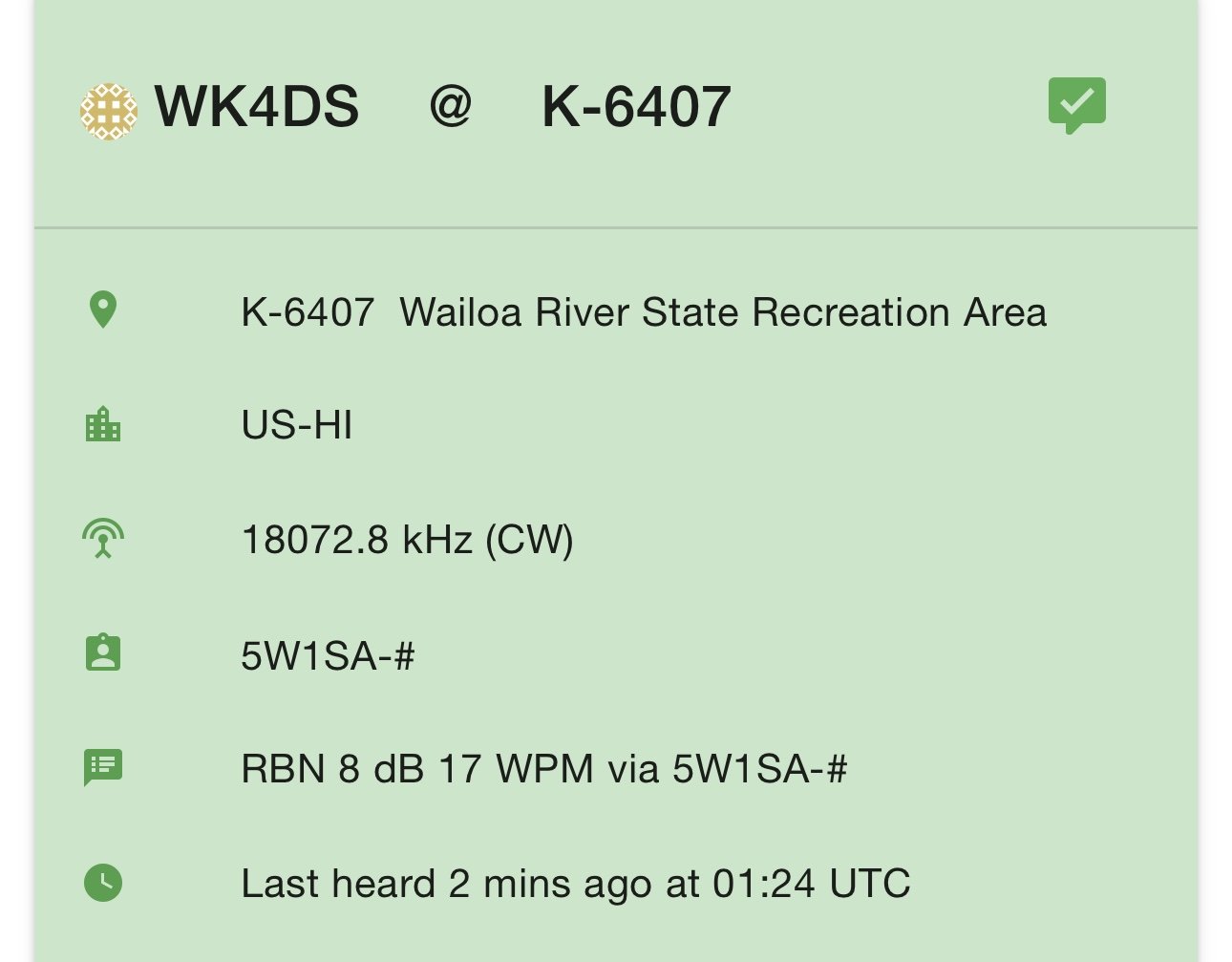When I started this activation, I had no idea how the bands would act, there has been a lot of QSB lately so it is kinda a crap shoot. I only had about an hour so I figured I would try to get a few contacts… little did I know I was about to have a lot of fun!
God showed his power to me today when I got on 17 meters and started calling CQ. I had gotten my first contact pretty fast and it was another activator, so I got a Park to Park right out of the chute. Then I started hearing this station just up the band from me… I dialed up and found it was a fellow down in Turks and Caicos! I waited till he called CQ and threw my call back to him…and he HEARD IT!!! DX in the log and I am just getting started!!! Woohoo! Then the VERY NEXT QSO was Sweden calling me!!! For me, this is cool dx, as I dont get to work other countries very often, especially with a QRP radio…
If you look close (right beside the key), you can see where I pieced together the call sign for the VP5 call sign. He was going faster than I normally can copy so I grab letters one or two at a time till I build the whole call. Then I listen for the exchange and at that point I am ready to try to call them. I think they were probably running about 25 WPM of maybe just a little faster, and I normally operate at around 18 to 20 WPM…
On this day I used my Penntek TR-35 radio on the bed cover of the truck. This is a fun operating position as I get to interact with other people in the park some as well. On this day, there was a family that wanted to know what all the wires were about so I took a short break and explained what I was doing to them. This is why there is a 10 minute period between contacts 3&4 in the logbook.
Another point about this common mode choke on the TR-35, it is the perfect size to hold up the radio when operating like this… lol. It does look “techie” too so it makes the little station look cool in my opinion. Lol.
The radial connection works really well for the multiple setup like I am using here. This is all the radials to cover all four bands the TR-35 has access to, 40, 30, 20 & 17 meters. This way I only need to switch the verticals to change bands. It is actually really fast like this and I am debating whether or not to make the multiple antenna mount now…
As noted in a previous blog post, I added an Anderson Powerpole socket to the little module for other things to be able to share the power as well. I don’t need it with this radio but it is nice to have when I run my IC-705 as the antenna tuner has it’s own power cable.
So to wrap things up, you never know when the band will open and you can make a 4500 mile contact with your QRP rig on a hamstick till you hook it up and try. So get your radio out and go play with it somewhere. Until next time…
72
WK4DS











































